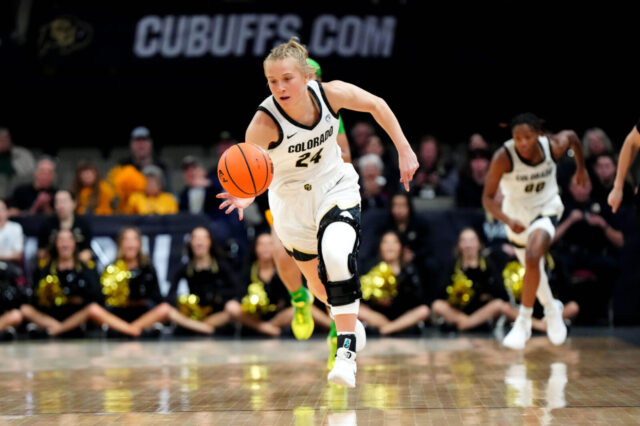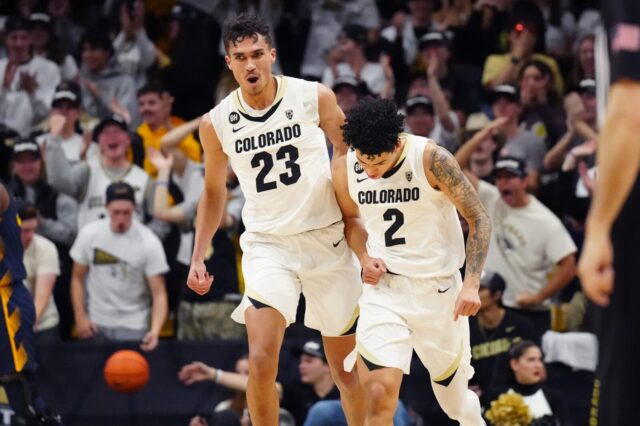Earle Bruce was essential to the success of Colorado State football in the 1990s.
In fact, it could be argued that without Bruce leading the way in 1990, there couldn’t have been Sonny Lubick’s legendary run in the mid-late 90s.
Bruce, who lived a life in the world of football – 53 years in all – passed away today at the age of 87, it was announced by his daughters in a release.
To the world of college football, Bruce is a man steeped in Ohio State Buckeyes tradition. He was a player (1951) and then assistant coach (1966-1971) and finally as the head coach (1979-1987), coming up one win short of a National Championship in 1979, but taking the Buckeyes to eight straight bowl games overall.
“I’ve made it clear many times that, other than my father, Coach Bruce was the most influential man in my life,” Urban Meyer said in a release. “Every significant decision I’ve made growing up in this profession was with him involved in it. His wife and he were the role models for Shelley and me. They did everything with class. He was not afraid to show how much he loved his family and cared for his family.”
After he was fired by Ohio State, Bruce coached one year at Northern Iowa before coming to Colorado State in 1989 and forever changing CSU football.
In 1987 and ’88, CSU was dreadful. The Rams won a mere two games in those two seasons combined, going 1-11 and 1-10, resulting in Leon Fuller’s firing. In came Bruce, and immediately, CSU was competitive. They went 5-5-1 in 1989, and then, in 1990, did the nearly impossible by winning the program’s first ever bowl game.
That year, the Rams played four ranked teams – losing to Arizona State, Arkansas and BYU – but they did beat then-No. 19 Wyoming and ended the regular season 8-4 overall. That means three of their four losses on the season came to Top-25 teams.
In December of 1990, the Rams played in the Freedom Bowl, only their second ever bowl game and first appearance since 1948, against the Oregon Ducks. The defense that day was nothing short of dominant, holding Oregon to a mere seven rushing yards while holding on to win 32-31.
“I loved that guy as a coach, he had fire and passion! He will be missed,” Aggies to Rams writer and Colorado State Athletics Historian John Hirn told me in an email.
That fire and passion might have pushed the Rams to new heights, but it led to Bruce’s firing, too.
After going 3-8 and 5-7 in 1991 and ‘92, Bruce was fired due to allegations of verbal and physical abuse, as well as other issues, like telling players not to take necessary classes if they interfered with football practice times. The New York Times has the list of five allegations made by Colorado State and then president Albert Yates about Bruce, including punching “at least nine players” and violating NCAA rules for off-season coaching of players and more.
Still, even with the unceremonious ending to Earle Bruce’s career at Colorado State – which was his final college coaching job – he led the way for a new culture of college football in Fort Collins. He set the stage for Sonny Lubick to come in and take the program to even newer heights.
“Earle, without a doubt, made it easier for Sonny to do what he did in 1994,” Hirn continued. “It was not just the Freedom Bowl team, but Earle’s ability to bring a whole new level of coaching and football to the school. Think about it, he brought Urban Meyer, Skip Hotlz and Tom Ehlers to this school to coach. He took CSU from 1-10 team in 1988 to a 5-5-1 team in just a year and a bowl win in two years. He made CSU step up their way of thinking about football and although he stepped on people’s toes, he did it for the betterment of the school.”
As Hirn explained, even though Bruce had been fired in 1992, some of his recruits were key players in that 1994 team, Lubick’s second year, which won the Western Athletic Conference Championship. They also ended the regular season 10-1, the No. 10 team in the nation and eventually lost to Michigan in the Holliday Bowl. That started a run of bowl games in nine of the next 12 years for Colorado State, a stretch of success never before seen at the school and one current head coach Mike Bobo strives to achieve.
After leaving CSU and college coaching, Bruce went onto coach five years at the Arena Football level, retiring in 2004. In 2002, he was inducted into the College Football Hall of Fame.
While Bruce was a coaching decedent of legend Woody Hayes, the list of his former assistant coaches who went on to become head coaches is sensational. It includes, Nick Saban, Urban Meyer, Skip Holtz, Pete Carroll, Dom Capers, Jim Tressel and many more.
Today, the world of college football mourns an important member of their family in Earle Bruce. And that extends to the smaller family of Colorado State football, who have Bruce to thank for pushing the Rams to a new level in 1990.
“Earle was an individual who brought attention to detail and an attitude to Colorado State that mediocrity in any form, in any part of the program, was unacceptable.” Gary Ozzello said in a release from Colorado State. “He was able to do something that had not been done at CSU in four decades: Not only going to a bowl game, but winning.”



